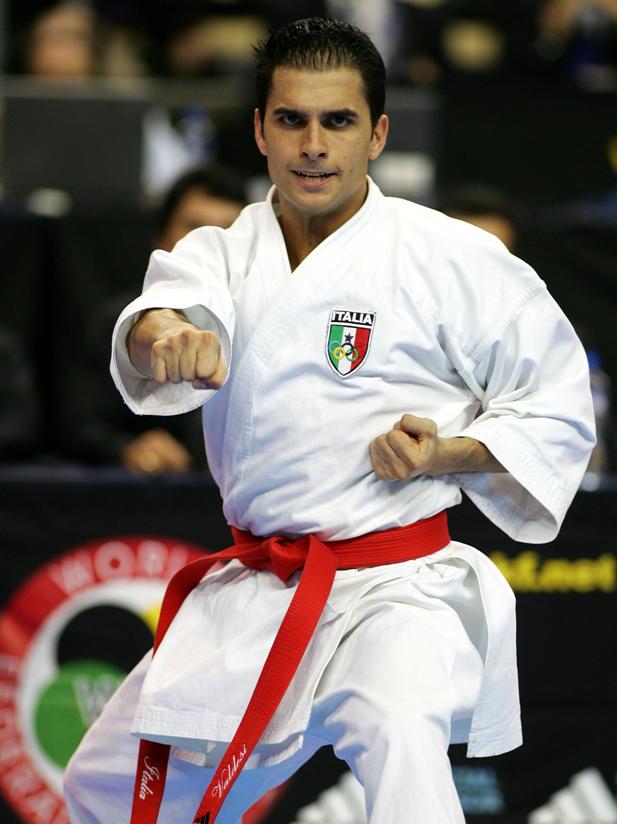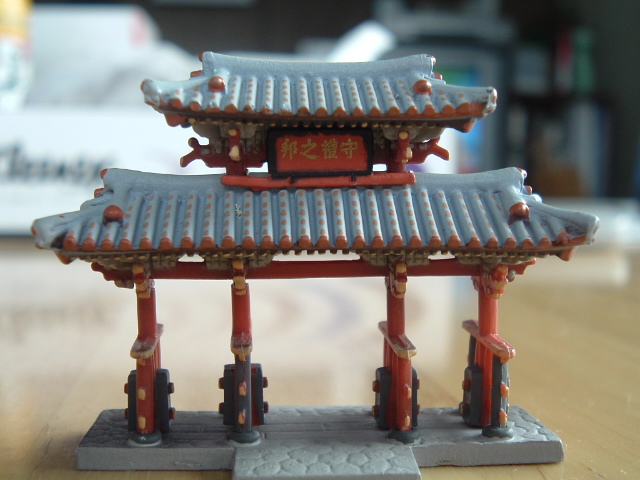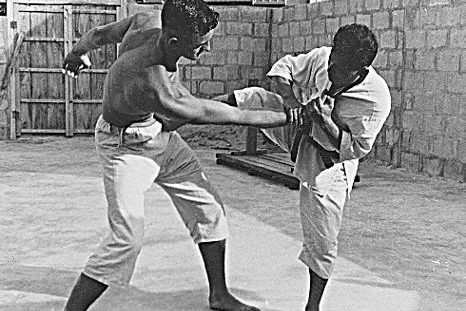“Travel, instead of broadening the mind, often merely lengthens the conversation.”
– Elizabeth Drew
I’m back!
After an insanely blister filled week of hiking and climbing in the amazing mountains of Sicily (the tip of the southern boot shaped part of Italy), I’m now finally sitting on the plane from sunny Palermo back to civilisation again. Yet another adventure to check off of my bucket list, in other words.
(By the way, you never know how much you miss wi-fi until you go MIA for a week!)
Naturally, after such an overwhelming experience – physically, culturally, socially and spiritually – a couple of hours kicking back on an airplane is just what I need to process all the input accumulated throughout this unforgettable week.
And you know what? As I contemplate on what I’ve just experienced in Sicily, I can’t help but constantly think to myself: “Hey, that was just like in Okinawa!”
(You know, the birthplace of Karate.)
Indeed, and although I’m not a professional Japanophile by any means, from my limited time living, studying, working and training in Okinawa; I am pleasantly surprised by the striking similarities I easily manage to find between the two islands of Sicily and Okinawa.
For instance: In Okinawa, people love the purple sweet potato – they use it for flavoring and coloring practically everything (even ice cream and cakes). In Sicily, on the other hand, they love pistachio nuts instead – so they use it in exactly the same way(s) – for flavoring everything! Pasta, biscuits, sausage, cakes, ice cream… you name it – they’ve got a pistachio version.
Another example: In Sicily, they use the long, green and healthy zucchini as their main traditional vegetable for all kinds of dishes. In Okinawa, however, they use a green vegetable known as goya instead (imagine a super bitter cucumber) as the “special ingredient” for traditional dishes. They look basically the same!
And let’s not forget the flags! Both Sicily’s and Okinawa’s traditional flags are variations of the triskelion:

But no matter how much I tell you about the mind blowing physical similarities I keep finding between the two islands, perhaps nothing is more important than the fundamental mindset these two remarkable cultures seem to imbue their citizens with:
The open mind.
You see, Sicily, due to its natural position in the middle of the Mediterranean Sea (lying between Europe and Africa), has historically been a strategic link in connecting the eastern and western Meditterranean and the Latin World with the Greek – resulting in it being not only the prized possession of foreign powers in its tumultuous history, but also a battleground between warring kingdoms. Nedless to say, Okinawa’s history is almost an exact Asian copy! So, Sicily’s long history of foreign influences has produced an incredible mix of traditions and cultures, resulting in a unique juxtaposition of art, music, language, sports, colors, science and such.
Just like in Okinawa – the cradle of Karate.
And that’s the exact same mental landscape you need to cultivate if you really consider yourself a true Karate-ka.
The thing is, just like the different wines of Sicily are a product of a plethora of factors – aging, soil, sunlight, and temperature to name but a few – Karate is also originally a 100% organic product of several fighting traditions and methods sporadically introduced to different parts of Okinawa (Tomari-te, Shuri-te and Naha-te being perhaps the three most famous ones toted by historians today), later to be codified into various modern forms of what we today collectively refer to as Karate.
I sincerely believe that if it wasn’t for the uniquely open climate of diversity in Okinawa at the time – the kind that still exists in places like Sicily – Karate would probably never have developed the way it did, resulting in the awesome smartial art you and me are practising today.
By continually being exposed to unfamiliar ideas you will develop a mindset that never ceases to learn, adapt and grow.
And that’s the mindset you need if you are to become a true Karate Nerd™.
“The illiterate of the 21st century will not be those who cannot read and write, but those who cannot learn, unlearn, and relearn.”
– Alvin Toffler
If you believe otherwise; I’m sad to say you’re operating under a fundamentally broken set of assumptions about what Karate actually is… and isn’t.
So then, perhaps, it is no wonder that one of the most talked about exponents of modern Karate, with a unique (and highly debated) world-class ability to fuse traditional Shotokan Karate with modern scientific sports principles, actually hails from this rural Italian island which I’m now flying home from.
Yup, that’s right.
I’m talking about Luca Valdesi.

As one of few Karate practitioners to ever make it into the Guinness Book of World Records, his incredible winning chart of World Champion/World Games titles (I lost count at 7 gold) speaks for itself, along with being unbeaten in the European Championships since 2000 (and let’s not forget winning the Italian championships basically every year since 1995) – making him ranked #1 in the World of Sport Karate, with kata as his speciality, today.
(Note: How (and why!) he managed to complete a degree in business economics on the side of his Karate career remains something of a mystery!)
So you know I had to do it.
I had to interview him!
What are his thoughs on traditional and modern Karate? What is his personal approach to Karate? How does he actually train (times/week, weight training, running)? What is his message to his numerous critics? What does he think about Karate and the Olympics? How does his future plans look like? What is his secret sauce recipe to becoming a world-class Karate athlete?
That, and much more, is what I asked him.
And the answers might surprise you.
Indeed, there is something to be said for the fact that a disproportionately large amount of World Championship gold medals are currently hanging on walls in Sicily and Okinawa. These two cultures have a lot more in common than vegetables, flags and strategic geographical location, it seems.
Believe me.
You’ll see.
Valdesi sensei is living proof.
So stay tuned for part two, where I reveal my super exclusive interview with Luca Valdesi – the undisputed king of tournament kata – straight from the mean streets of Palermo, Sicily, Italy.
Ciao.



7 Comments